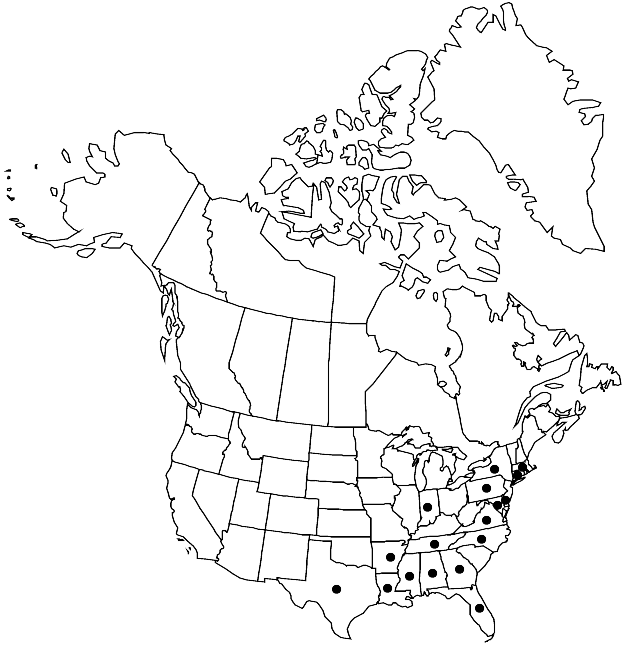Difference between revisions of "Thuidium alleniorum"
Bull. Torrey Bot. Club 7: 16. 1880.
imported>Volume Importer |
imported>Volume Importer |
||
| Line 57: | Line 57: | ||
|publication year=1880 | |publication year=1880 | ||
|special status=Endemic;Illustrated | |special status=Endemic;Illustrated | ||
| − | |source xml=https:// | + | |source xml=https://bitbucket.org/aafc-mbb/fna-data-curation/src/2e0870ddd59836b60bcf96646a41e87ea5a5943a/coarse_grained_fna_xml/V28/V28_600.xml |
|genus=Thuidium | |genus=Thuidium | ||
|species=Thuidium alleniorum | |species=Thuidium alleniorum | ||
Latest revision as of 21:36, 5 November 2020
Plants light green or yellow. Stems 3–6 cm, irregularly to regularly 2-pinnate, loosely foliate; paraphyllia papillose at sides of cells. Stem leaves loosely erect or slightly incurved when dry, erect-spreading when moist, ovate, not or somewhat plicate, 1 mm; margins plane or sometimes reflexed basally, ± denticulate throughout by projecting cell ends; apex broadly short-pointed, acute; costa ending near apex; distal laminal cells hexagonal, 7 × 7 µm, papillae usually 2-fid, appearing to be 1–3 per cell. Branch leaves apical cell truncate, multipapillose. Primary branch leaves 0.5–0.6 mm; costa 8/10–9/10 leaf length. Secondary branch leaves 0.2–0.4 mm; apex acute or obtuse; costa 7/10–8/10 leaf length. Sporophytes unknown.
Phenology: Capsule maturity unknown.
Habitat: Soil, logs, exposed roots, tree bases in swamps, just above water line, Taxodium-Nyssa-Chamaecyparis swamps
Elevation: low to moderate elevations
Distribution

Ala., Ark., Conn., Del., Fla., Ga., Ind., La., Md., Mass., Miss., N.Y., N.C., Pa., Tenn., Tex., Va.
Discussion
Thuidium alleniorum is essentially restricted to the Atlantic and Gulf coastal plains and the Mississippi Embayment. The species is slender and loosely, sometimes irregularly 2-pinnate. Thuidium alleniorum could easily be taken for a depauperate expression of T. delicatulum. However, T. alleniorum is smaller and has short-pointed stem leaves with margins plane or nearly so, and the branch leaves are noticeably incurved. The laminal cells are 8–9 µm and adorned with very low papillae that are generally 2-fid so that the cells commonly appear in surface view to be 2 (or 3)-papillose.
Selected References
None.
